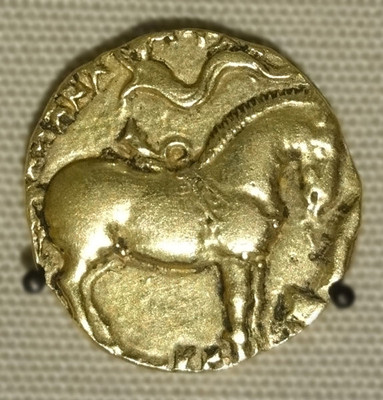Under the Guptas, the central deities of Hinduism and their worship assumed a form that has dominated the religious landscape of India from that day to this, and in recent years, this Hindu aspect of the Gupta's religious activities has loomed large in historians' accounts of their reign. As the Delhi-based historian Romila Thapar explains, the Guptas continue to make their presence felt in India today, not only in the monuments left behind, but also in the way that the period is used politically:
在笈多王朝的統治下,印度教的主神及其供奉方式成為定制,至今仍支配著印度的宗教格局。近年來,不少歷史學家都在探討笈多王朝中的印度教活動。新德里賈瓦哈拉爾尼赫魯大學古印度史榮譽退休教授羅米拉塔帕解釋說,在今天的印度還能感受到笈多王朝的存在,不僅因為他們留下的建筑物,也包括一些政治方式:
"When colonial history began to be written, and then there was nationalist historical writing, the Gupta period was latched on to as the golden age. There has grown in India in the last few decades, a way of thinking which has been called Hindutva, which is an attempt to suggest that the only person that has legitimacy as a citizen of India, is the Hindu, because the Hindu is supposed to be the indigenous inhabitant.Everybody else-the Muslims, the Christians, the Parsees-all came later and came from outside, they were foreign. Never mind the fact that they are all, 99 per cent of them, of Indian blood. And the Gupta period then came in for a great deal of attention as a result of this kind of thinking."
在開始記述印度殖民史時,有一種民族主義的書寫方式將笈多王朝稱為黃金時代。過去幾十年,一種叫印度教徒主義的理論逐漸壯大,他們認為只有印度教信徒才是印度的合法居民。因為只有印度教是土生土長的。穆斯林、基督徒、祆教徒都是后期從國外來的。可他們卻沒考慮過這些教徒中99%都是純印度人。正是因為這種思潮,笈多王朝重新受到重視。
This seems surprising, because as the two coins we've looked at show, the Guptas not only established temple Hinduism in something like its modern form, but they also honoured older religious traditions, and were generous protectors of both Buddhism and Jainism.
這實在令人驚訝。正如我們的金幣所示,笈多王朝雖然建立了印度教的全新形式,但他們也尊奉舊有的宗教傳統。同時,他們還大力保護與耆那教,并無排外性。












